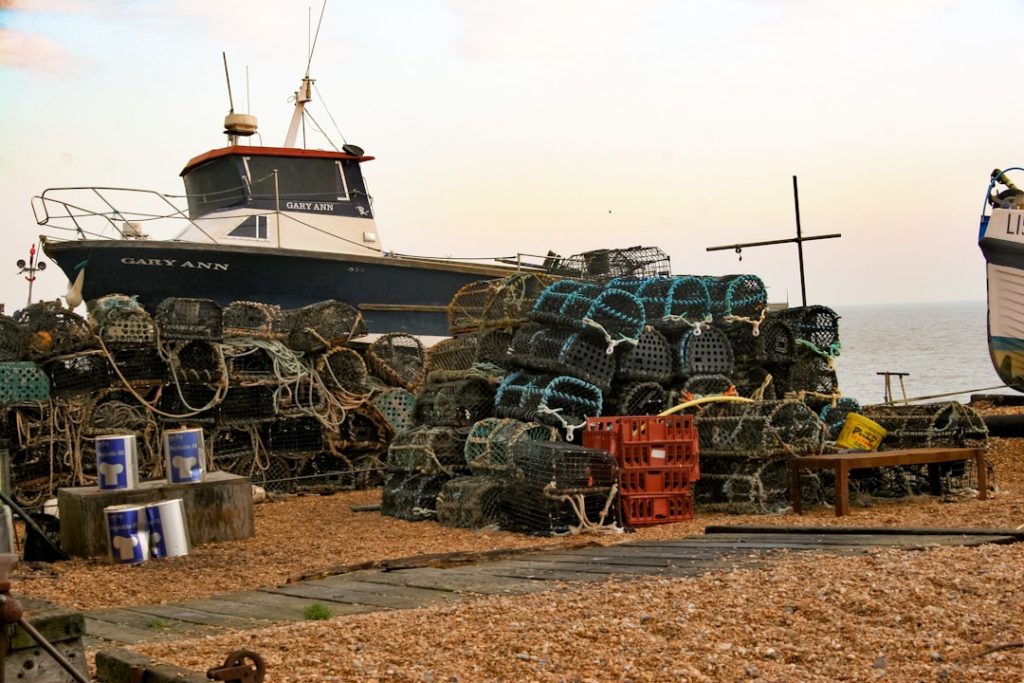Boat scrap yards play a crucial role in the maritime ecosystem, serving as essential hubs for the disposal and recycling of old and damaged vessels. These facilities not only provide a solution for boat owners looking to dispose of their unwanted crafts but also contribute significantly to environmental sustainability. By facilitating the recycling of materials such as fiberglass, metals, and wood, boat scrap yards help reduce waste and promote the reuse of valuable resources.
This is particularly important in an industry where the lifespan of boats can vary widely, leading to a significant number of vessels reaching the end of their operational life. Moreover, boat scrap yards serve as a treasure trove for DIY enthusiasts and marine repair professionals. They offer a wide array of used parts and materials that can be salvaged and repurposed, often at a fraction of the cost of new components.
This not only supports cost-effective repairs but also encourages a culture of sustainability within the boating community. By sourcing parts from scrap yards, boaters can extend the life of their vessels while minimizing their environmental footprint. The importance of these facilities extends beyond mere disposal; they are integral to fostering a circular economy within the boating industry.
Key Takeaways
- Boat scrap yards play a crucial role in responsible boat disposal and recycling.
- Locating nearby scrap yards involves online research and local marine community resources.
- Understanding the scrapping process helps boat owners prepare and comply with regulations.
- Safety and environmental considerations are essential when visiting and using boat scrap yards.
- Scrap yards offer valuable opportunities to find quality used boat parts and promote material reuse.
How to Locate Boat Scrap Yards Near You
Finding a boat scrap yard in your vicinity can be a straightforward process if you know where to look. One of the most effective methods is to utilize online resources. Websites dedicated to boating and marine services often have directories that list local scrap yards.
Additionally, search engines can yield results when you input specific queries such as “boat scrap yard near me” or “marine salvage yard.” Social media platforms and community forums can also be valuable resources, as local boating communities frequently share recommendations and experiences regarding nearby facilities. Another practical approach is to connect with local marinas or boat repair shops. These establishments often have established relationships with scrap yards and can provide insights into the best places to go for scrapping or salvaging parts.
Networking with fellow boaters can also lead to valuable information; many enthusiasts are familiar with local resources and can point you in the right direction. Attending boat shows or marine expos can further expand your network, allowing you to meet industry professionals who may have insider knowledge about reputable scrap yards in your area.
Understanding the Process of Scrapping a Boat

The process of scrapping a boat involves several steps that ensure the safe and efficient disposal of materials while maximizing recycling opportunities. Initially, boat owners must assess their vessel’s condition and determine whether scrapping is the best option. Factors such as repair costs, age, and overall structural integrity play a significant role in this decision-making process.
Once the decision is made, the owner typically contacts a scrap yard to arrange for the boat’s delivery or pickup. Upon arrival at the scrap yard, the boat undergoes an inspection to evaluate its materials and components. This assessment helps the yard determine how best to dismantle the vessel for recycling.
The scrapping process often begins with the removal of hazardous materials, such as fuel, oil, and batteries, which must be handled according to environmental regulations. Following this, valuable components like engines, electronics, and metal fittings are extracted for resale or recycling. The remaining hull is then processed, often being shredded or crushed to facilitate the recycling of fiberglass and other materials.
This systematic approach not only ensures compliance with environmental standards but also maximizes the recovery of reusable resources.
What to Consider Before Visiting a Boat Scrap Yard
| Consideration | Description | Importance Level | Tips |
|---|---|---|---|
| Safety Gear | Wear appropriate clothing, gloves, and sturdy shoes to protect against sharp objects and hazardous materials. | High | Bring gloves, closed-toe shoes, and eye protection. |
| Tools Required | Bring necessary tools for dismantling or inspecting parts, such as wrenches, screwdrivers, and cutting tools. | Medium | Check with the yard if tools are allowed or provided. |
| Yard Policies | Understand the scrap yard’s rules regarding access, removal of parts, and payment methods. | High | Contact the yard ahead of time to clarify policies. |
| Environmental Hazards | Be aware of potential exposure to fuel, oil, asbestos, or other hazardous materials. | High | Take precautions and avoid disturbing hazardous areas. |
| Part Availability | Check if the scrap yard has the specific boat parts or materials you need. | Medium | Call ahead or browse inventory online if available. |
| Transportation | Plan how to transport large or heavy parts from the yard to your location. | Medium | Bring a suitable vehicle or arrange for delivery if possible. |
| Legal Considerations | Ensure that parts are legally sold and that you have permission to remove them. | High | Request documentation or receipts for purchased parts. |
| Time Commitment | Visiting and searching a scrap yard can be time-consuming. | Low | Allocate sufficient time for thorough inspection. |
Before heading to a boat scrap yard, there are several important considerations that can enhance your experience and ensure you make informed decisions. First and foremost, it is essential to have a clear understanding of what you are looking for—whether it’s specific parts for repairs or simply information about the scrapping process. Having a list of required items can help streamline your visit and prevent unnecessary time spent wandering through the yard.
Additionally, it is wise to research the reputation of the scrap yard you plan to visit. Reading reviews or seeking recommendations from fellow boaters can provide insights into the quality of service and inventory available at the facility. Some yards may specialize in certain types of boats or materials, so knowing what to expect can save you time and effort.
Furthermore, consider calling ahead to inquire about their current inventory or any specific items you need; this can help you gauge whether it’s worth your while to visit.
Safety Precautions When Visiting a Boat Scrap Yard
Safety should always be a top priority when visiting a boat scrap yard, as these environments can pose various hazards due to heavy machinery, sharp objects, and potentially hazardous materials. Wearing appropriate personal protective equipment (PPE) is essential; this includes sturdy footwear, gloves, and safety glasses to protect against debris and sharp edges. Additionally, wearing long sleeves and pants can help shield your skin from cuts and scrapes while navigating through the yard.
It is also crucial to remain aware of your surroundings at all times. Scrap yards are often bustling with activity, including heavy equipment moving around and workers dismantling boats. Keeping a safe distance from machinery and following any posted safety guidelines will help minimize risks.
If you are unsure about how to handle certain materials or equipment, don’t hesitate to ask staff for assistance; they are typically knowledgeable about safety protocols and can provide guidance on how to navigate the yard safely.
Environmental Impact of Boat Scrapping

The environmental impact of boat scrapping is multifaceted, encompassing both positive contributions to sustainability and potential challenges if not managed properly. On one hand, boat scrap yards play an essential role in reducing waste by recycling materials that would otherwise end up in landfills. The recycling process conserves natural resources by repurposing metals, fiberglass, and wood into new products rather than extracting raw materials from the environment.
This not only reduces energy consumption associated with manufacturing but also lessens pollution generated during production processes. However, if not conducted responsibly, boat scrapping can pose environmental risks. Boats often contain hazardous materials such as lead-based paints, fuel residues, and batteries that require careful handling to prevent contamination of soil and water sources.
Reputable scrap yards adhere to strict regulations regarding the disposal of these substances, ensuring that they are processed in an environmentally friendly manner. The challenge lies in ensuring that all facilities comply with these standards; thus, choosing a reputable scrap yard is vital for minimizing negative environmental impacts.
Reusing and Recycling Materials from Boat Scrap Yards
The potential for reusing and recycling materials from boat scrap yards is vast, offering opportunities for both cost savings and environmental benefits. Many components salvaged from scrapped boats can be refurbished or repurposed for use in other vessels or projects. For instance, engines that are still operational can be sold at a fraction of their original price, providing an affordable option for those looking to repair or upgrade their boats without breaking the bank.
Fiberglass is another material that holds significant potential for recycling. While it is often challenging to recycle due to its composite nature, innovative techniques are being developed to break down fiberglass into reusable raw materials. Some companies are exploring methods to convert fiberglass waste into new products such as insulation or construction materials.
This not only diverts waste from landfills but also creates new economic opportunities within the recycling industry. By promoting reuse and recycling practices within boat scrap yards, we can contribute to a more sustainable future for boating.
Tips for Finding Quality Used Boat Parts at Scrap Yards
When searching for quality used boat parts at scrap yards, there are several strategies that can enhance your chances of success. First, it’s beneficial to familiarize yourself with common parts that are frequently salvaged from boats, such as engines, propellers, electrical systems, and hardware like cleats and winches. Understanding what you need will help you identify valuable components more quickly during your visit.
Another effective tip is to visit multiple scrap yards if possible. Each facility may have different inventory based on their clientele and local demand; thus, exploring various locations increases your chances of finding specific parts that may not be available elsewhere. Additionally, don’t hesitate to ask staff members for assistance; they often have extensive knowledge about their inventory and may be able to guide you toward hidden gems within the yard.
Patience is also key when searching for used parts; sometimes it takes time to sift through piles of materials before uncovering what you need. Keeping an open mind about potential alternatives can also be beneficial; for example, if you cannot find an exact match for a part, consider whether similar components could be adapted for your needs. By employing these strategies and maintaining a proactive approach during your visits, you can maximize your chances of finding high-quality used boat parts at scrap yards while contributing positively to sustainability efforts within the boating community.


